Amongst other nicknames, (Warsaw on the coast, the Monte Carlo of the Baltic, Poland’s summer capital etc...) you would have once heard it referred to as one of Europe's premier health and spa resorts.
For the best part of 200 years the city has attracted the rich and idle from all over Europe with its rejuvenating spas and health resorts. As with much of Poland, the city was hit heavily first by the war, then a chronic lack of capital in the years after. The last few years have seen the builders move in, and 2009 finally saw the curtains pulled back to reveal what all the clanking and bulldozing has been about.
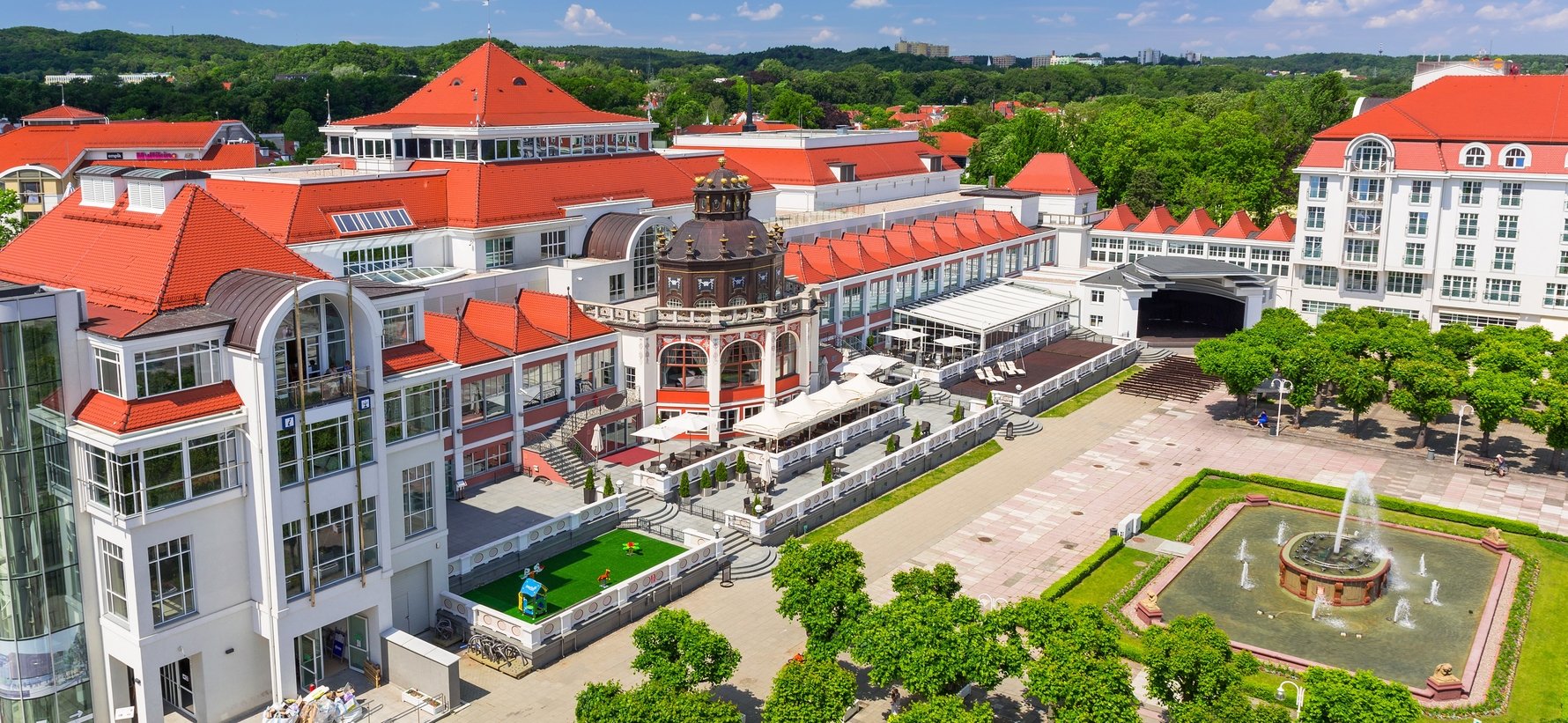
The bottom end of Monte Cassino to the pier has had a complete facelift and central to this multi-million euro development is the next incarnation of the Spa House (Dom Zdrojowy), the return of which signals Sopot aim to once again be present on the top table of Europe’s resorts.
The first Spa House (1824-1879)
Although there has been recorded settlement here since 1283, the history of spa in the city can be traced back to the beginning of the 19th century. Attempts were made by Carl Christoph Wegner, a powerful Gdańsk patrician, to create a resort here right at the start of the 19th century.While his attempt hit a wall, the birth of Sopot (Zoppot, by its German moniker) as a spa resort was close to hand. But it took a Frenchman to make it work, namely Jean George Haffner. Having discovered Sopot while moving through Europe as a doctor in Napoleon’s army, he returned here after the Russian campaign and became a permanent resident.

In 1823, he opened the first Bath House (Warmbad to the Germans) which offered a range of treatments and baths. The first Spa House (Salon or a Kursaal) was opened in 1824, changing rooms added on the beach and a small pier built. This toe-in-the-water opening gambit was a small, single storied building built perpendicularly to the beach. The Bath House built the year previous offered treatments, while the new building served to become the social HQ for the area with a name for concerts and parties.
Haffner died in 1830, but his legacy didn’t. Stewardship passed into the hands of the Böttcher family who added another storey to the Spa House, featuring 12 modest hotel rooms, while Haffner himself entered folklore, today revered as the father of modern Sopot. It’s for this reason you’ll find the town bristling with hotels, streets and monuments in his honour.
The Second Spa House (1880 – 1909)
The year 1870 saw a new railway line connecting Sopot with Berlin, hence sparking a stampede for which the town was unable to cope with. The projects of Haffner and Böttcher were simply not able to meet the new demands being placed on them by the rise in visitors, and the town council stepped in to the rescue. The existing buildings were pulled down, and in their place rose a new complex containing the Second Spa House.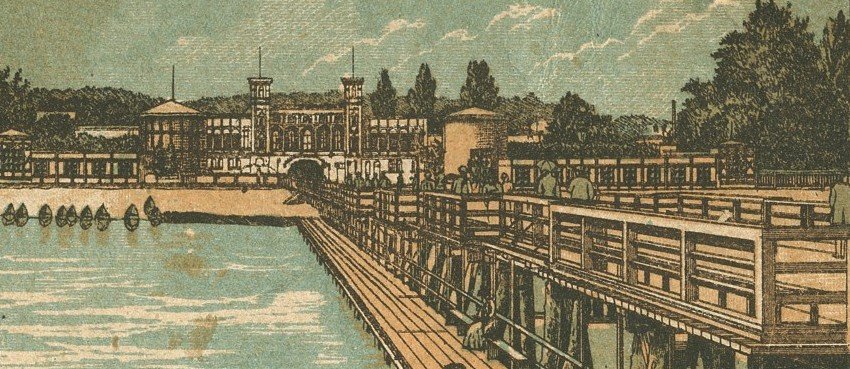
Opened in 1881, this was an altogether larger affair, built with half-timbered walls, filled with brick and ornamented with wooden elements. It moved slightly from its original location and could be found on Nordstraße (now Powstanców Warszawy Street). The symmetrically fronted building with its two towers faced the sea and a double staircase led guests to the upper floor. A magnificent vestibule took centre stage, opening onto the restaurants and ballroom, forty hotel rooms were further added, as were spaces for reading, music and billiards. The square (Kurgarten) separated the Spa House from the beach, and was originally surrounded by wooden verandas on the eastern side. These modest verandas were replaced by new spacious walking galleries in 1895 which functioned as shelters for up to 2,000 people on rainy days.
There was a concert arena located in the northern wing of the Spa Square (recreated next to the Sheraton) and concerts were given for patients and guests alike during the summer, and the area was crowned by a magnificent fountain in 1903.
The Third Spa House (1910 – 1945)
Not content with what they had inherited a new set of civic authorities carried out a further set of extensive renovations to the resort. New complexes of baths were added in the years 1903 and 1907, and the pier extended by 160m in 1910. The Second Spa House, barely 30 years old, and despite renovations, was no longer suitable for the demands placed upon it, and in 1909 it was levelled to the ground and replaced by a third.Although a competition in 1908 had accepted two designs, these were rejected out of hand by the town fathers due to cost and instead Gdańsk architect Carl Weber, was handed the task of designing a new Spa House. In tandem with Adolph Bielefeldt and Paul Puchmüller, Weber designed and built the new Spa House which was constructed in record time between September 30th 1909 and 15th June 1910. Good work, lads! An impressive complex of buildings surrounding the Spa Square on all four sides, the Spa House was moved slightly to the north to allow the main thoroughfare, Seesstraße (now Bohaterów Monte Cassino Street) to reach the sea. Seesstraße was the commercial hub of the city, first of all connecting the railway station with the Spa House and then becoming the centre for business in the city with hotels such as the Werminghoff (located on the corner of today’s Bohaterow Monte Cassino and Grunwaldzka streets), and the offices of the editor of the Zoppoter Zeitung and the premises of the famous Moritz Stumpf jewellers located close by.
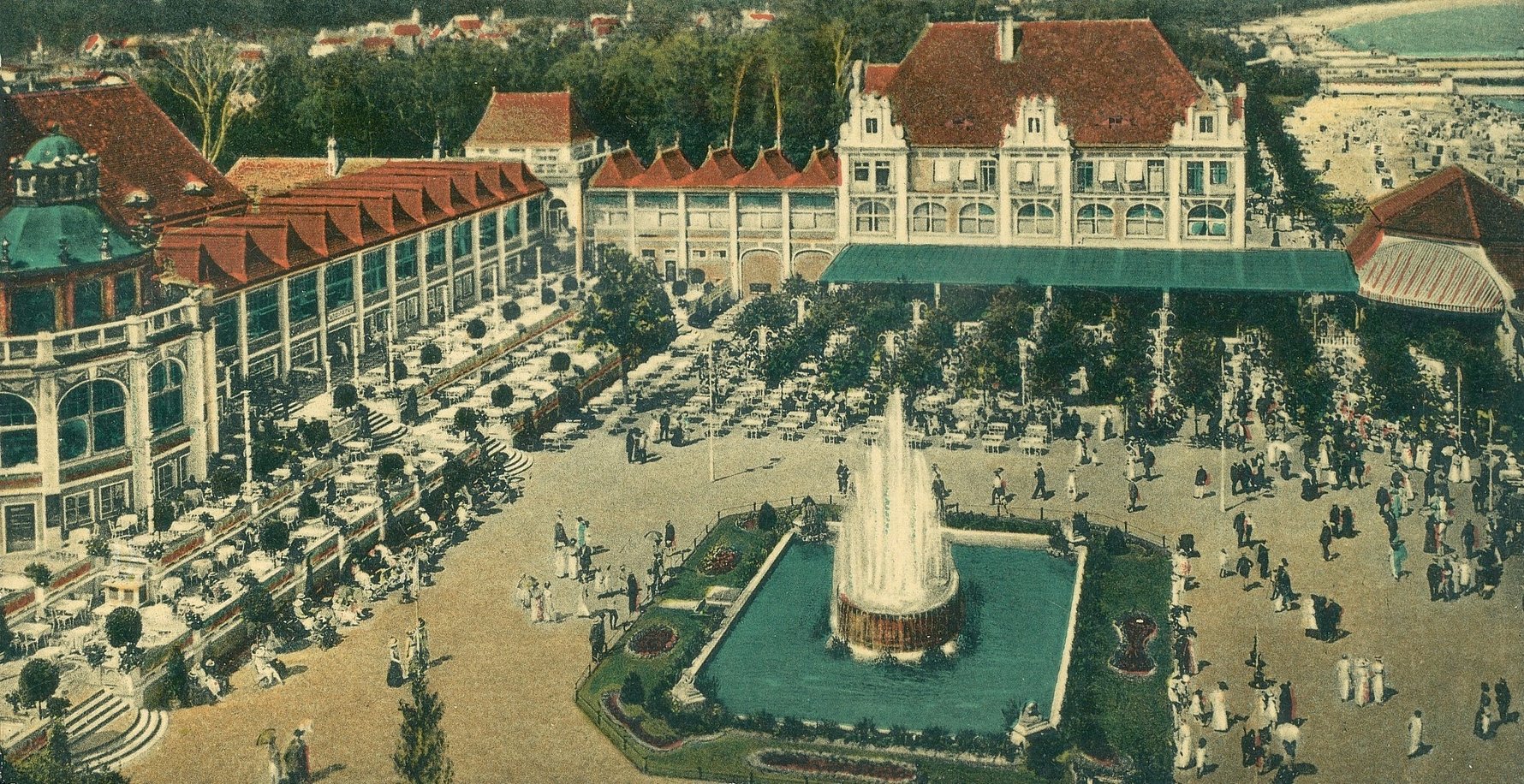
The new Spa House was like nothing that had come before, containing snazzy mod-cons like boilers, cold storage rooms and a telephone switchboard. Pride of place went to a 540 sq/m concert hall known as the Red Room, and this in turn was hemmed in by other function rooms named after the galaxy of colours they made use of. Good times were seen as key to success, and as such the Spa Square side was given over to restaurants with a combined capacity for over 2,000 guests.
The feature rooms on the first floor were intricately decorated by acclaimed artists such as Gdansk’s Fritz Pfule, Hermann Frobenius of Münich, Ernst Fey and sculptors Bürger and Meisen from Berlin all engaged. Services were numerous, including money exchange, theatre, dance comps and card rooms, while a selection of foreign press – including Polish language publications from the three partitioned states - added an international flavour.
The square itself was extended from 6,000 to 9,000m2, an 80-room hotel built and the brick verandas added on the eastern side. These wind breaks were replaced by galleries in 1928, and still exist in their original form.
In 1919, and with Sopot now a part of the Free City of Danzig, the famous casino came into being. Initially, this just took up a couple of rooms on the first floor of the South Wing of the Spa House, with Roulette played in one, Baccarat in another and a Kasino bar in the third. This was to become the focal point of Sopot, and not too different from the bars and ballrooms immortalized by F. Scott Fitzgerald. And while the Spa House had developed throughout the 19th century so too had the town around it. Sopot was experiencing its golden age, and even during wartime continued to thrive as the R&R destination of choice for combatants on leave. This was all soon to change, and it doesn’t take a science degree to guess that 1945 had something to do with that.
The precise story as to what happened when the Red Army arrived in March ’45 remains murky, though several eye witness accounts suggest both civilians and soldiers alike were chased into the sea by an artillery barrage directed from the hills. What is clear is that after the Soviets entered Sopot on March 23, 1945, the lower end of Seesstraße, the casino and much of the Spa House were levelled.
The Spa House was not reconstructed after the war and the ruins were pulled down in 1945- 1947. Only a couple of original elements remained – a single storied pavilion in the south-western corner the concert bowl, terraces, fountain and the semi-circular galleries next to the sea.
In 1947, the area was used by the Gdansk International Trade Fairs company and temporary structures were erected. Temporary. Many were finally pulled down in preparations for the new developments and having stood for over six decades, managed to survive longer than any of the previous incarnations of the Spa House.
As for Seesstraße (ul. Marszałka Rokossowskiego until 1956, then Bohaterów Monte Cassino after that), that became a shadow of its former self. Lost to artillery were notable addresses such as the Warminghoff Hotel (by then the Vorbach), while the square itself was rechristened Polish-Soviet Friendship Square - a lie if ever there was. Damaged glories were knocked down, replaced instead by 60s and 70s monsters, whose horrid number included the avant-garde (it was at the time) Alga building which housed the biggest food outlet on the Baltic.
The other nasty single storey pavilions that shot up, most were knocked down in 2006-2007 to make way for the new development, and are now fondly forgotten as a passing blur from the communist years.
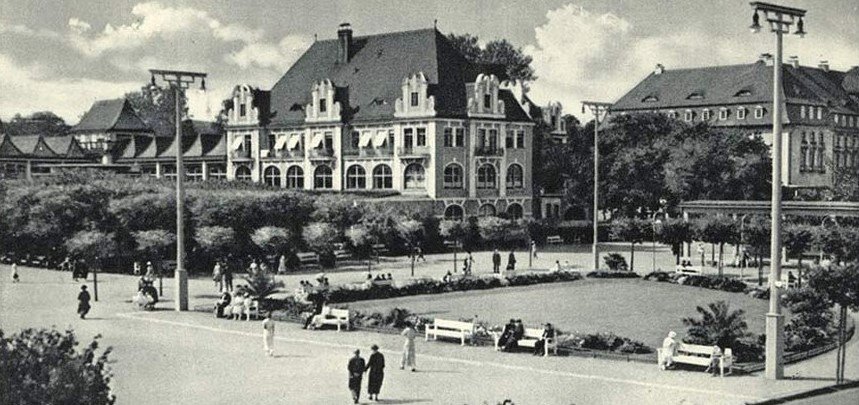
The Fourth Spa House
Now the Spa House has returned a fourth time, and the early signs suggest its former title as the thumping heart of Sopot will quickly be regained.The latest incarnation includes around it the Sheraton and Bayjonn hotels, a multiplex, conference centre, a shining new piazza and an impressive range of bars, cafes and terraces from which to meet Sopot.
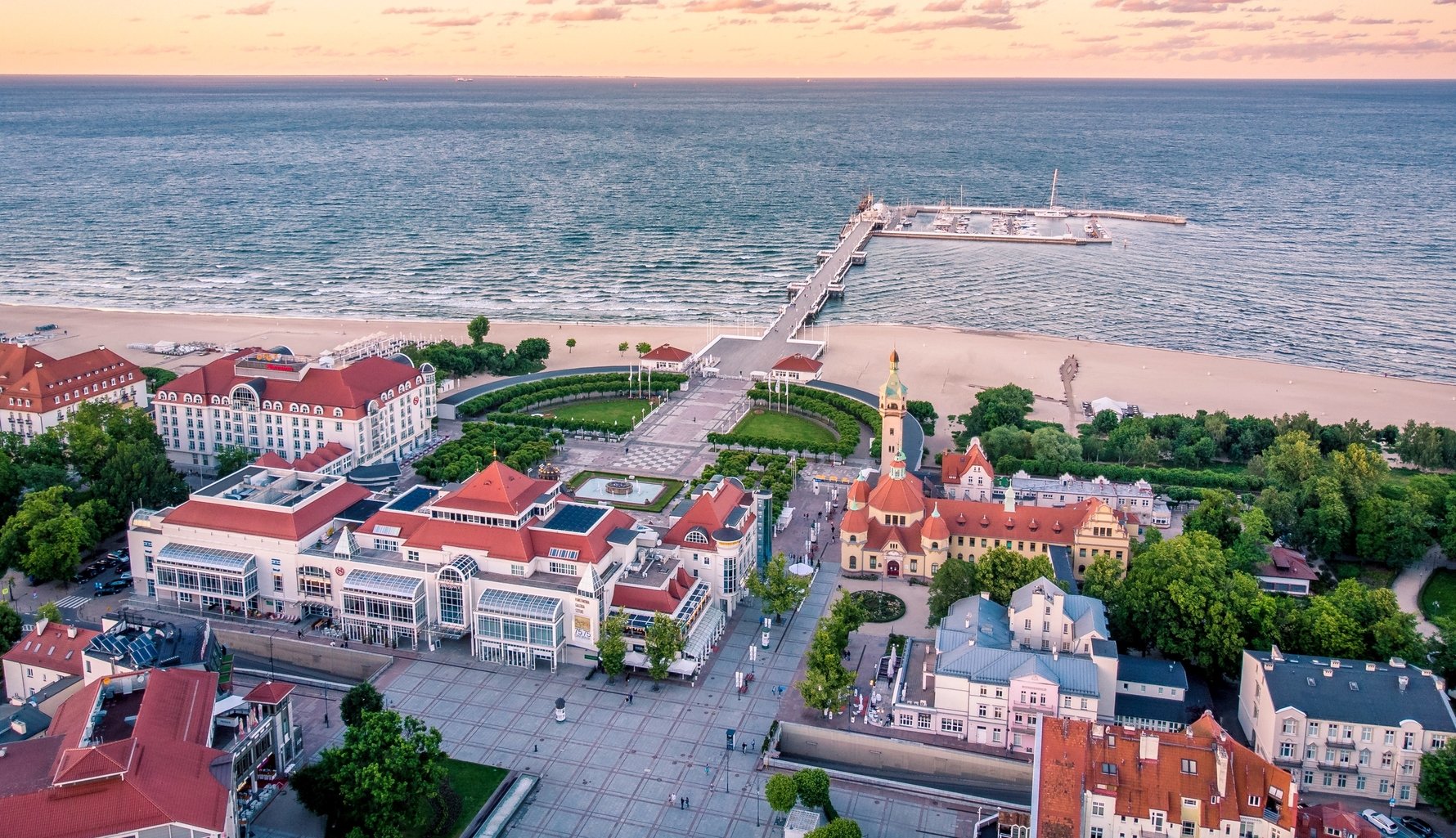
The development was formally opened to the public on July 18th, 2009, and will leave anyone who remembers Sopot of yore doing a double take. Gone are the shabby pavilions and lego architecture of the 70s, replaced instead with a sparkling development that hasn’t foregone the past – the rotunda is a faithful reproduction, while the fountain is a restored original.


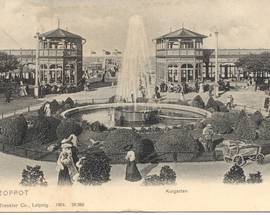
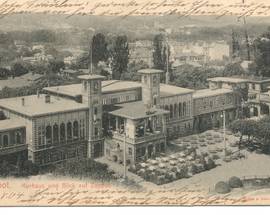
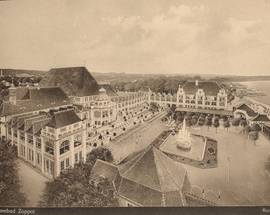
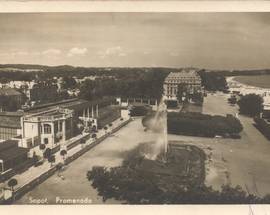
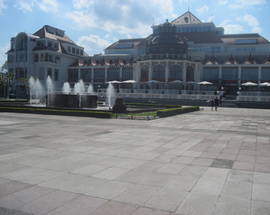
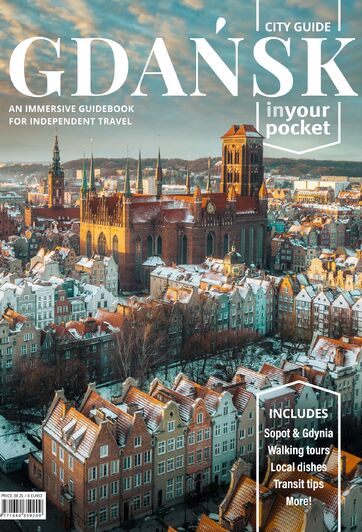
Comments